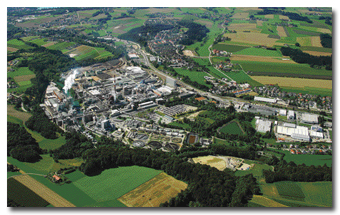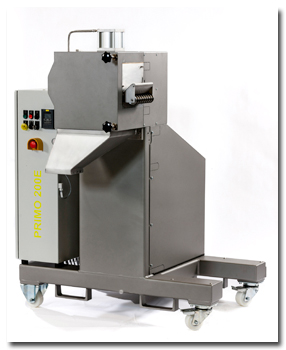Austria-based Lenzing AG is the co-host of the 2013 ITMF Annual Conference in Bregenz, Austria. In
an exclusive interview,
Textile World
wanted to know from Friedrich Weninger, COO and a member of Lenzing’s Management Board,
why his company is so involved in this event.
TW: How is the Lenzing Group supporting the Austrian textile industry?
Weninger: We have contacts in a number of innovative textile companies in Austria
with regard to product developments, technical service and marketing support. We appreciate their
innovative spirit and cooperation. Also, the young designer base in Austria is very interesting for
us. We support these talents with know-how and marketing activities.
TW: What would you like to achieve with these activities for your domestic textile
industry?
Weninger: Networking! The most important tool for such a small textile country as
Austria is networking. To know the players in the textile industry from spinning through the whole
chain up to retail is very important.

Friedrich Weninger extends a warm welcome to the global textile family — enjoy your stay in
Austria!
TW: Is Austria still a textile country?
Weninger: Although the industry does not play the same role as it did in former
times, we have still more than 300 companies working in the industry, with an export share of
nearly 90 percent. These are quite high figures for a small country like Austria, and the high
export rate shows the reputation of Austrian products.
Personal Questions
Since the beginning of 2009, Friedrich “Fritz” Weninger has been a member of the Lenzing AG
Management Board. Lenzing is the world’s biggest and leading producer of man-made cellulosic
fibers.
In 1989, Weninger started his career at Lenzing in the High Performance Products Division.
Later on, he did strategic planning in the holding company for three years, followed by 10 years in
various leading positions in the Textile Fibers Business Unit, including sales, marketing and sales
logistics. From 2003 to 2008, he served as head of Textile Fibers.
Weninger, 56, is married and a happy father of two children. He describes himself as “a
passionate golfer and a family person.”
Markets
TW: How do you see the current market situation in general for Austria?
Weninger: Austria is part of the European Union, and many issues correspond.
Nevertheless, compared to other EU countries, Austria is in quite good shape — for example, with
regard to unemployment figures, especially concerning young people. This is due to a unique
apprentice training system through which the trainees get the opportunity to work in companies
while at the same time they are trained at school.
TW: How do you see the current market situation for your company?
Weninger: The ongoing difficult market environment for man-made cellulosic fibers
shaped the business development of the Lenzing Group in the first quarter of 2013, as expected. The
situation was characterized by the weak price development on the global fiber market, which is
being shaped by the ongoing high cotton inventories. Nevertheless, volume demand was good, which
served as the basis for the ongoing capacity utilization of all our production facilities.

Lenzing’s production site in Lenzing, Austria, is the world’s largest integrated pulp and
viscose fiber production site.
The Country
TW: What are the main advantages of the country Austria as such?
Weninger: I think the high education standard and the innovative spirit makes
Austria unique in the world.
TW: What are the main advantages for the Austrian textile industry?
Weninger: Well, the quality of the products and the high specialization and
innovation level. Another important feature of Austrian textile companies is that they have high
environmental standards and innovative products also in this respect.
TW: How important is the textile industry for the country?
Weninger: It is a sector with great tradition and has a number of small and
innovative companies.
Market Position
TW: Why should a company buy textile products from Austria and not elsewhere?
Weninger: The standard of sustainability is well-known in the world and gives
Austrian products a good image. Especially, environmentally aware consumers appreciate the high
level of design and innovation.
TW: What is the world’s image of Austria? A wonderful place for holidays, or
what?
Weninger: Austria is, of course, well-known as a country with beautiful landscapes
and tourist regions, not least because the environment is absolutely clean and well looked-after.
But — apart from its cultural traditions and high quality of life — Austria has also been very
successful in keeping up a high share of industry, a fact that has resulted in attractive export
business and a very good level of employment. The reputation of Austrian quality products and
innovation is also a very attractive feature of this country.
ITMF Conference
TW: How did the idea come about to bring the 2013 ITMF conference to Bregenz?
Weninger: Bregenz is near Austria’s Swiss and German borders and is somehow the
heart of this region. It is a good idea to combine the textile spirit of all three countries.
TW: Do you like the idea that the ITMF conference is close to the Dornbirn
Man-made Fibers Congress?
Weninger: Absolutely, this is great. The whole industry can meet in one place.
Networking and exchange are extremely important, especially for innovative business ideas.
TW: Why is your company supporting this event?
Weninger: We as a fiber producer are interested in innovation and textile
networking. We are interested in all partners in the textile chain, and our aim is to connect the
whole industry.
TW: What do you expect from the congress for the Austrian textile industry?
Weninger: New trends, innovation and new thinking as well as meeting long-standing
contacts.
TW: What would you like to say to the visitors to the ITMF conference in
Bregenz?
Weninger: A warm welcome to the global textile family — enjoy your stay in Austria
and get the best out of this interesting event for your professional life!
July/August 2013





